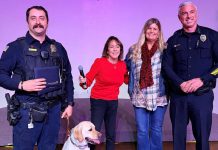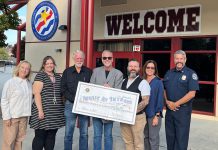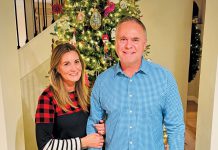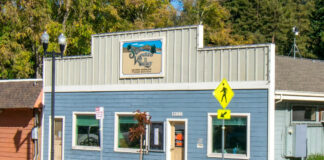A great hunter must think like his prey. Where does it nest and when, where does it feed, what is unique about its behavior, and what sounds does it make?
But when Alex Rinkert goes out to hunt, he does not take a gun. He takes his binoculars. Alex is a bird watcher who is becoming well-known for finding birds that no one else can see.
Lee Summers, Quail Hollow Park naturalist, says that, “Alex has single-handedly increased our bird list by 30 percent. He has a great eye for seeing birds. One of our volunteers, Ann Williams, is trying to finish a bird binder, but she can’t because he keeps seeing new ones. When you talk to Alex, he’s listening, but his eyes are constantly scanning the horizon for birds.”
Recently, when I asked Todd Newberry, University of California, Santa Cruz, professor emeritus, birding expert and author, to be a guide again for the upcoming of San Lorenzo Valley Watershed Nature Walks, he said, “Only if we can get Alex Rinkert to co-lead.”
So who is Alex? He is a junior at San Lorenzo Valley High School. And Todd says, “He is easily among the valley’s best birders.”
Alex and his science partner, Connor Chesus, placed first in the Monterey Bay Sanctuary Currents Symposium in the high school division for their work on ecological succession at Quail Hollow Ranch. As the grasslands and sand parkland are disappearing, evergreen forest and riparian habitats are encroaching. Alex and Connor studied how the change is affecting bird species.
They have also qualified for the Intel International Science and Engineering Fair, which gathers the world’s most creative, intelligent and resourceful high school students from more than 50 countries, to compete for more than $3 million in awards and scholarships. The competition is this week.
Alex studies pelagic birds, too, so he frequently serves as a chummer on Monterey Seabirds’ boats. As a chummer, he attracts birds by putting popcorn and fish out on the water.
On a trip last fall, he felt “overwhelmed by a swarm of sooty shearwaters who travel to the bay from New Zealand for food. They sit on the water and feed in huge flocks. All you can see are these dark brown birds all the way to the horizon.”
Alex says that seabirds are decreasing in number, because their island nesting habitats are being destroyed by introduced species, such as rats and weasels.
On land, “Scientists estimate that free-roaming cats kill hundreds of millions of birds, small mammals, reptiles and amphibians each year. Cat predation is an added stress to wildlife populations already struggling to survive habitat loss, pollution, pesticides and other human impacts,” according to the American Bird Conservancy.
A Quail Hollow birding expedition will kick off this season’s Watershed Nature Walks, funded by an Environmental Education Grant from the SLV Water District. If you would like to join Todd, the avian sage from UCSC, and Alex, our native son “birdologist” on May 22, please contact me at ca****@*********on.com. Space is very limited.
Carol Carson, an environmental activist, writes an occasional nature column for the Press-Banner. She has been a docent for Henry Cowell Redwoods State Park and taught courses on Big Basin State Park for UCSC Extension.












